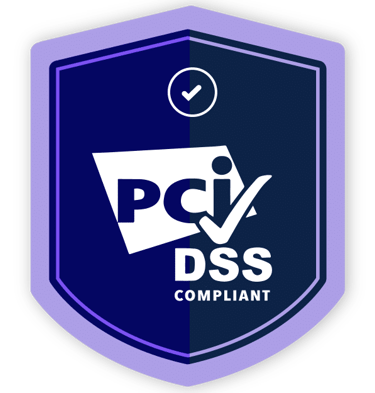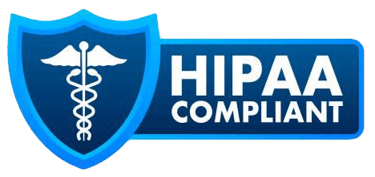In the heavily regulated world of home health and hospice care, compliance is not optional—it is the backbone of safe, ethical, and legally compliant patient care. But for many agencies, survey deficiencies can feel overwhelming. Receiving a Statement of Deficiencies (2567), a failed survey, or a condition-level citation puts an agency at immediate risk: halted admissions, payment suspension, increased scrutiny, state follow-ups, and potential termination from Medicare.
However, deficiency does not have to be synonymous with failure. In fact, many of the most successful home health and hospice agencies today once faced severe operational or clinical compliance issues before transforming their systems and achieving full accreditation.
This article explores real-world examples of agency turnarounds, highlights what went wrong, how issues were corrected, and what steps led to successful accreditation—while aligning closely with the Medicare Conditions of Participation (CoPs) for home health and hospice.
Understanding Deficiencies: Why They Occur
Deficiencies arise when a surveyor identifies that an agency is not meeting a federal CoP or a state licensing requirement. Common triggers include:
Incomplete clinical documentation
Failure to meet timeliness standards
Incomplete or missing comprehensive assessments (e.g., §484.55 for home health)
Lack of documentation showing decline for hospice
Missing care plan updates or IDG documentation
Improper supervision of LVNs, HHAs, or CNAs
Missing emergency preparedness plan elements
Inaccurate or incomplete QAPI program
Noncompliance with personnel file requirements
While deficiencies may vary, the solutions often follow predictable patterns: analysis, correction, prevention, and documentation.
Case Study 1: Home Health Agency with Condition-Level Deficiencies
The Situation
A medium-sized home health agency in California failed its state survey due to multiple condition-level deficiencies, primarily involving:
Late or incomplete comprehensive assessments (§484.55)
Missing OASIS documentation
Care plans without updates reflecting changes in condition
Poor coordination between RN, PT, and MSW services
QAPI program with no measurable performance indicators
The agency was placed under immediate jeopardy of losing its Medicare certification.
The Turnaround Strategy
1. Rapid Assessment of All Clinical Documentation
A full audit was performed on:
SOC/ROC/Recert visits
OASIS accuracy
Care plans
Supervisory visits
Coordination notes
This audit revealed systemic delays, inconsistencies in assessment completion, and multiple non-billable episodes.
2. Redesign of RN Workflow
To comply with CoPs, the agency implemented:
Timed SOC → OASIS workflow protocols
Immediate cross-discipline communication templates
Daily clinical huddles for care plan alignment
These changes ensured compliance with §484.60 (Care Planning, Coordination, and Delivery of Care).
3. Strengthening the QAPI Program
Surveyors specifically noted “QAPI in name only.”
The agency built a legally compliant QAPI program with:
Quarterly measurable indicators
Data-driven performance improvement cycles
Documentation of actions taken—not just problems identified
4. Staff Retraining and Competency Validation
All field staff underwent mandatory retraining covering:
OASIS documentation
Timeliness standards
Nursing process
Infection control
Coordination notes
Competency check-offs ensured accountability.
The Result
Within 60 days, the agency submitted a strong Plan of Correction (POC) with:
Corrective actions
Preventive measures
Monitoring tools
Responsible personnel
A focused revisit survey confirmed compliance, and the agency achieved renewed accreditation without penalties.
Case Study 2: Hospice Agency Facing Immediate Jeopardy
The Situation
A hospice agency in Southern California received an Immediate Jeopardy (IJ) citation after surveyors found:
Missing CTI (Certification of Terminal Illness) elements
Incomplete IDG documentation
Notes lacking objective evidence of decline
Medications without associated diagnoses
Missing RN supervisory visits
Failure to demonstrate eligibility under §418.22 and §418.56 put the agency’s Medicare identity at risk.
The Turnaround Strategy
1. Complete Clinical Documentation Overhaul
A team of nurse auditors reviewed:
CTIs for both physician certification statements and detailed narratives
Face-to-face encounter documentation
IDG interdisciplinary group compliance
Plan of care updates
Medication reconciliation
The team identified several issues:
Physicians were using template CTIs lacking specificity
Decline was not documented in measurable terms
The IDG was not clearly revising the POC every 15 days as required
2. Retraining Medical Directors and IDG Physicians
The hospice’s physicians were trained to write:
Condition-specific clinical narratives
Objective measurements of decline
Clear prognostic indicators
Examples were provided for dementia, CHF, COPD, cancer, and stroke.
3. New IDG Documentation Workflow
The hospice implemented:
Pre-IDG clinical summaries
Real-time POC updates during the IDG
Documented medical necessity for all interventions
Team communication protocols
This ensured compliance with §418.56 and §418.58.
4. Strengthening RN Supervision
The agency created:
Supervisory visit tracking sheets
Automated reminders
A supervisory visit audit log
This prevented future missed visits.
The Result
In just 30 days, the IJ was removed.
In 90 days, the hospice passed a federal validation survey with zero condition-level deficiencies.
It is now a referral-rich, fully accredited agency known for exceptional compliance.
Case Study 3: Startup Agency That Failed Its Initial Survey
The Situation
A new home health agency attempted its initial survey and failed due to:
Missing policies required under CoPs
Incomplete personnel files
An emergency preparedness plan that did not meet federal standards
Governing body minutes missing approvals
No measurable QAPI indicators
Inconsistent orientation records
The survey ended early and the agency was required to re-apply.
The Turnaround Strategy
1. Development of a Complete Policy & Procedure System
The agency received:
Fully CoP-aligned policies
Updated emergency preparedness templates
Staff education modules
Governing body templates
Contracted provider agreements
Each document was customized to match the agency’s service model.
2. Personnel File Reconstruction
Missing items were corrected:
TB/PPD results
Licenses and certifications
Job descriptions
Signed competency checklists
Orientation records
Mandatory in-services
An HR file audit tool was implemented to prevent recurrence.
3. Operational Readiness Training
Leadership underwent training on:
Daily operations
Intake and admission procedures
Clinical coordination
Compliance monitoring
Survey preparedness
4. Mock Survey
A full mock survey with tracer patients was performed, identifying and correcting the final issues.
The Result
On the second attempt, the agency passed the survey with no condition-level findings, received its license, and successfully enrolled in Medicare.
It now operates at full capacity with clean compliance records.
How Agencies Can Prevent Future Deficiencies
Successful agencies do not wait for a survey to find problems—they build systems.
Key strategies include:
1. Routine Clinical Record Reviews
Regular audits ensure compliance with:
Medicare CoPs
OASIS accuracy standards
Eligibility documentation
Timeliness of assessments
IDG documentation
POC revision requirements
2. Strong QAPI Program
A functional QAPI program must include:
Quarterly measurable goals
Performance improvement projects
Documentation of corrective actions
Follow-up evaluation
3. Mock Surveys
Mock surveys simulate real surveyor behavior, identifying issues early.
4. Up-to-Date Policies
Policies must match:
Current federal CoPs
State licensing requirements
CMS updates
Emergency preparedness rules
5. Staff Education
Annual and ongoing training helps maintain:
Documentation accuracy
Infection control
Patient rights compliance
Discipline-specific competency
Conclusion: Deficiency Does Not Mean Failure—It Means Opportunity
Every agency in the examples above started from a position of deficiency—some with severe findings, others with operational gaps—but each achieved full accreditation through:
Structured corrective action
Strong documentation
Leadership training
Clinical oversight
Expert guidance
The reality is that most agencies can recover, but only with the right support, clear systems, and consistent follow-up.
Need Help Bringing Your Agency From Deficiency to Accreditation?
HealthBridge Consulting specializes in:
Deficiency correction
POC development
Mock surveys
Clinical documentation audits
QAPI program development
Operational restructuring
Accreditation readiness
Ongoing QA/oversight
Whether you are facing a survey, recovering from a failed one, or preparing for accreditation, HealthBridge ensures your agency remains compliant with all Medicare Conditions of Participation and state licensing requirements.
Your turnaround story can begin today.
For full-service consulting and clinical compliance support, partner with HealthBridge.







